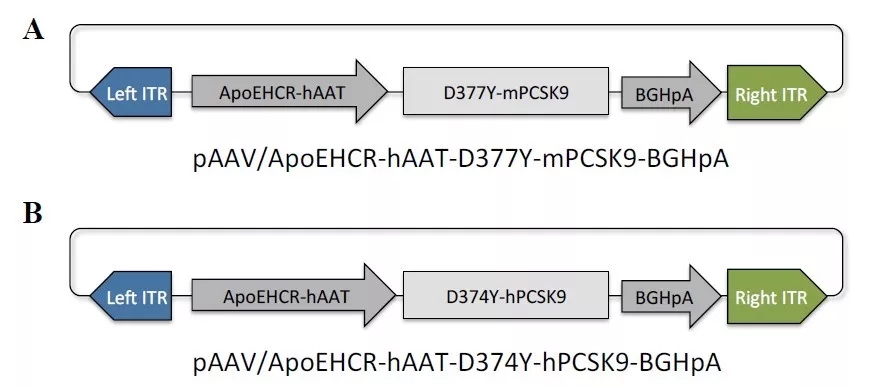PCSK9 and Atherosclerosis
Introduction to PCSK9
PCSK9 (Proprotein Convertase Subtilisin/Kexin Type 9): Proprotein Convertase Subtilisin/Kexin Type 9 is the ninth member of the kexin-like proconvertases family, encoded by the PCSK9 gene located on chromosome 1p32.3 and consists of 692 amino acids. PCSK9 belongs to a class of intracellular converting enzymes or decarboxylases, primarily expressed in the liver and intestines, with minimal expression in the kidney, brain, etc. [1,2].
The Role of PCSK9 in Atherosclerosis
PCSK9 is a newly discovered gene associated with autosomal dominant hypercholesterolemia in recent years. Its encoded protein can bind to the low-density lipoprotein receptor (LDLR) on the surface of hepatocytes, forming a complex that is targeted for degradation within lysosomes, thereby blocking the recycling pathway of LDLR on the cell membrane surface and inhibiting the removal and metabolism of low-density lipoprotein cholesterol (LDL-C) via LDLR transport from the body, leading to an increase in plasma LDL-C levels and ultimately resulting in the formation of atherosclerosis (AS) [3,4]. Currently, PCSK9 has become a popular target for the development of lipid-lowering drugs and the intervention of atherosclerosis (AS).
AAV-PCSK9 Modeling Method
To construct a mouse model of atherosclerosis, the following methods are commonly used: packaging PCSK9 adeno-associated virus (rAAV-D377Y-mPCSK9/ rAAV-D374Y-hPCSK9), and injecting 2-5×10E11 vg virus into mice aged around 8 weeks via intravenous injection. After feeding on a high-fat diet for 12 weeks, tissue samples are collected for detection.
Source: 《Induction of Atherosclerosis in Mice and Hamsters Without Germline Genetic Engineering》;
Weizhen AAV-PCSK9 Off-the-Shelf Product
In the past, researchers typically focused on animal feed to induce atherosclerosis models through dietary manipulation. As subsequent research has deepened, PCSK9 adeno-associated virus (AAV) injection combined with a high-fat, high-cholesterol diet has gradually become an ideal model-building approach for atherosclerosis.
Weizhen Biotech offers both human and mouse sources of PCSK9 overexpression AAV (AAV-PCSK9) for use in atherosclerosis research. The products are available off-the-shelf, with multiple serotypes and guaranteed quality. For inquiries, please call 400-077-2566 or consult your local sales manager.
Related Literature References:
1. Schulz R, Schlüter KD, Laufs U.Molecular and cellular function of the proprotein convertase subtilisin/kexin type 9 (PCSK9) [J].Basic Res Cardiol, 2015, 110 (2) :1-19.
2. Seidah NG, Sadr MS, Chrétien M, et al.The multifaceted proprotein convertases:their unique, redundant, complementary, and opposite functions[J].J Biol Chem, 2013, 288 (30) :21473-21481.
3. Alkindi M, Siminovitch KA, Gupta M, et al.Monoclonal antibodies for the treatment of hypercholesterolemia:targeting PCSK9[J].Can J Cardiol, 2016, 32 (12) :1552-1560
4. Alallaf F, H Nazar FA, Alnefaie M, et al.The spectrum of familial hypercholesterolemia (FH) in Saudi Arabia:prime time for patient FH registry[J].Open Cardiovasc Med J, 2017, 11:66-75






